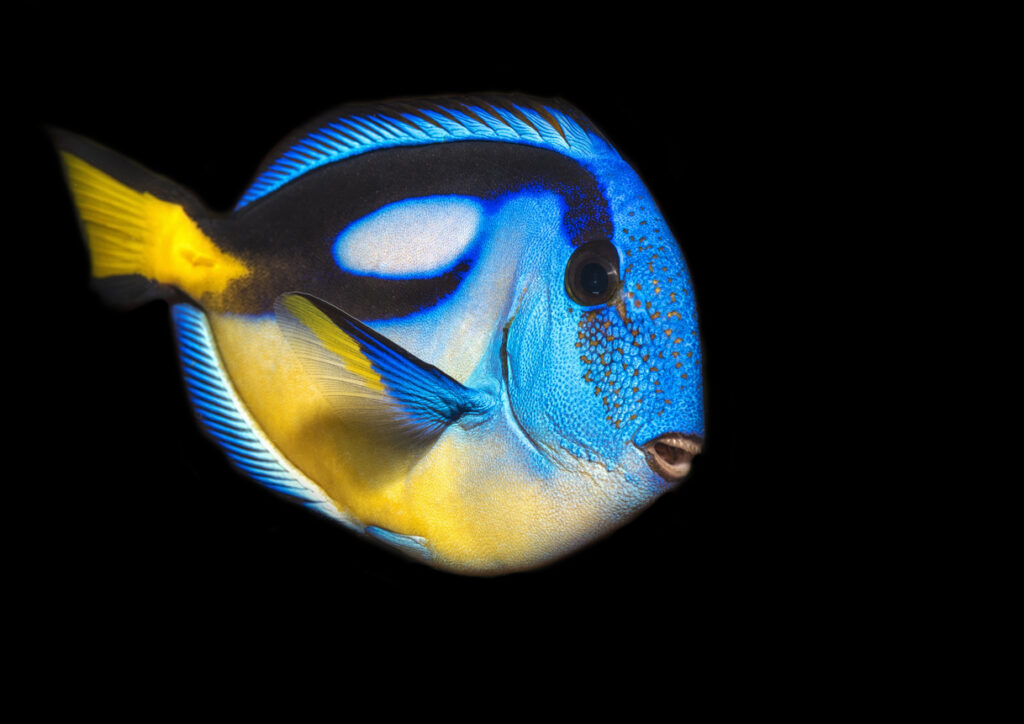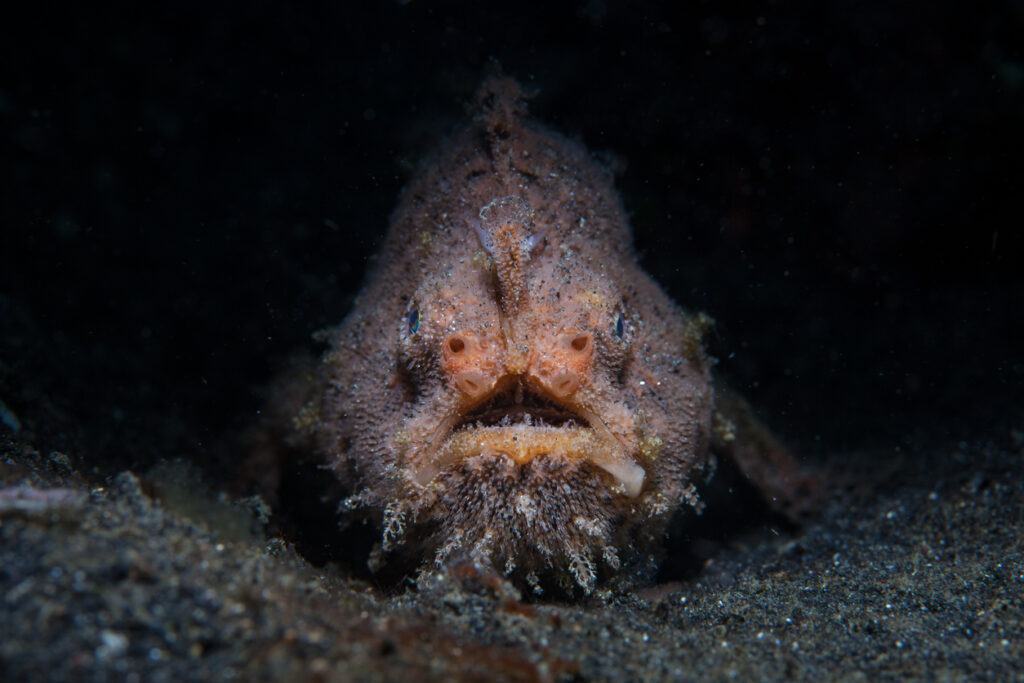Fish are incredible sea creatures, capable of some remarkable feats of swimming, feeding and survival that quite often defy logic. They negotiate murky depths with ease, yet have you ever stopped to wonder how they actually see where they’re going?
“What do fish see?” isn’t a silly question. In fact, it’s something our team hears all the time. Unfortunately, there’s no straightforward answer and the debate about what they are actually capable of seeing underwater rages on.
We do, however, know a few things about what fish vision is like. In this article we’ll try our best to outline what fish see as conclusively as possible.
What is a fish’s vision like?
First, let’s put this question into context.
It’s important to bear in mind that there are over 20,000 species of fish in our seas, rivers and oceans. Therefore, how they see and negotiate their environment differs broadly. For instance, a Stoplight Loosejaw fish that lives at a depth of 500 metres will see very differently from a Regal Tang. This is because the amount of light in the water ultimately dictates how their vision works for sea creatures.
Generally speaking, though, fish vision is highly sophisticated and not too dissimilar – believe it or not – from our own. Most fish eyes have familiar features like a cornea, lens, iris and retina, and they have a wide field of vision that’s double that of a human (360° compared to 180°).
With that said, most aren’t thought to have much of an eye for detail. They can’t generally focus on one object at a time and have instead evolved to focus on movement. This helps them to detect fast-moving predators and prey.
If you were listening in biology, you’ll know that most animals have ‘rods’ to distinguish light and dark, and this is no different for fish. That means their eyes do adjust depending on light levels, though this happens much more slowly than our own (with the exception being predatory fish like sharks, which use this to their advantage to hunt in low-light conditions).

Can fish see colours?
Since you rarely get ‘rods’ without ‘cones’, it’s true that sea creatures can see colour underwater. In fact, they’re able to differentiate a range of colours within the standard red, blue and green visual spectrum. Furthermore, this makes it decidedly easier to tell predator from prey in the depths of the ocean.
And it gets better because fish are actually able to pick up more colours than we are, including ultraviolet. These light waves are invisible to our eyes but not, according to the latest research, to fish like carp, pike, and the humble goldfish. This raises all sorts of new and interesting questions about what fish really see underwater, particularly given that we humans need what’s called a ‘blacklight’ to pick up ultraviolet.
With that said, not all can see colours and many are completely colour blind. Sharks, for example, have few cones so are unable to perceive a full spectrum of colours. The same can be said for deepwater fish too, which have evolved to have more rods than cones to detect tiny sources of light in the inky black of the ocean floor.
Can fish see far away and close up?
This is an interesting one! As we mentioned earlier, fish aren’t really able to focus on single objects at a time. So it’s hard to say what the scope of their vision is – particularly when it comes to seeing objects that are far away or close.
How human eyes and fish eyes differ is that we’re able to adjust our eye muscles to focus on short and long-range objects, whilst fish can’t do this. Instead, to see far-away objects and then close-up ones, fish must move their lenses backwards and forwards. This is called ‘accommodation’ and is something most species are capable of in order to focus on objects at different distances.
Again, we must caveat this by saying that this isn’t the case for all fish species. Brown trout, for example, are thought to be able to see distant objects with pinpoint clarity. Meanwhile, also being able to quickly adjust to focus on things up close. It all comes down to species, habitat and evolution.

Can fish see in the dark?
Some fish which have adapted to live in the extreme and hostile depths of the ocean can indeed see in the dark – that is, they can pick up details in their otherwise pitch-black surroundings. As touched on earlier, their eyes have more rods than shallow-swimming fish. This is why they’re better able to detect light at considerable depths where the sun’s rays scarcely penetrate.
Extra rods aren’t the only thing that helps these deep-water dwellers see in the dark, either. Their eyes have adapted to form another layer known as the ‘tapetum lucidum’, which is essentially a retroreflective lens not dissimilar from night vision devices used by us humans. This retinal layer essentially allows deepwater fish to see in low-light conditions, a feature they share with many animals, including owls, cats, frogs, and some species of primates.
Which fish have the best eyesight?
We’ve mentioned several species throughout our guide on what fish see, but of those with excellent vision, which is best?
For us, it has to be sharks. Sure, they may not be able to see colours, but their large corneas and additional tapetum lucidum layer mean they’re able to see clearly even in low-light conditions. Indeed, it’s thought that sharks can see up to 50 feet ahead of them at any one time, which is 10 times further than what we can naturally see without scuba goggles or masks.
So there you have it, our no-nonsense guide to what fish vision is really like. We’ve tried to cover all the interesting stuff without getting too science-y, but if you’d like to debate the question of how well fish see, our expert aquarists are always available to chat.
Come see our remarkable marine creatures for yourself at Tynemouth Aquarium, and don’t forget to give them a wave – they can see you, after all. Tap here to book your tickets.
